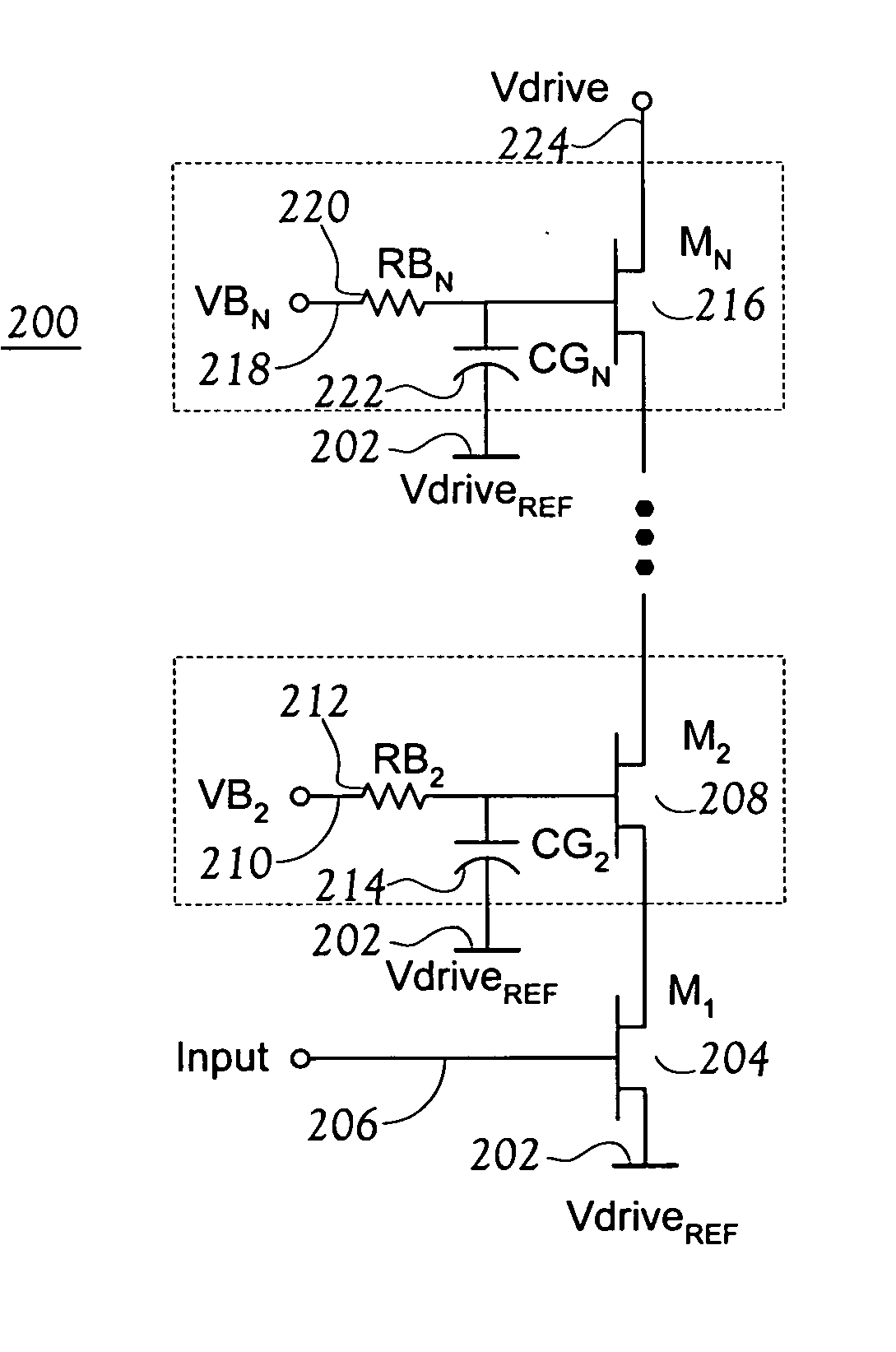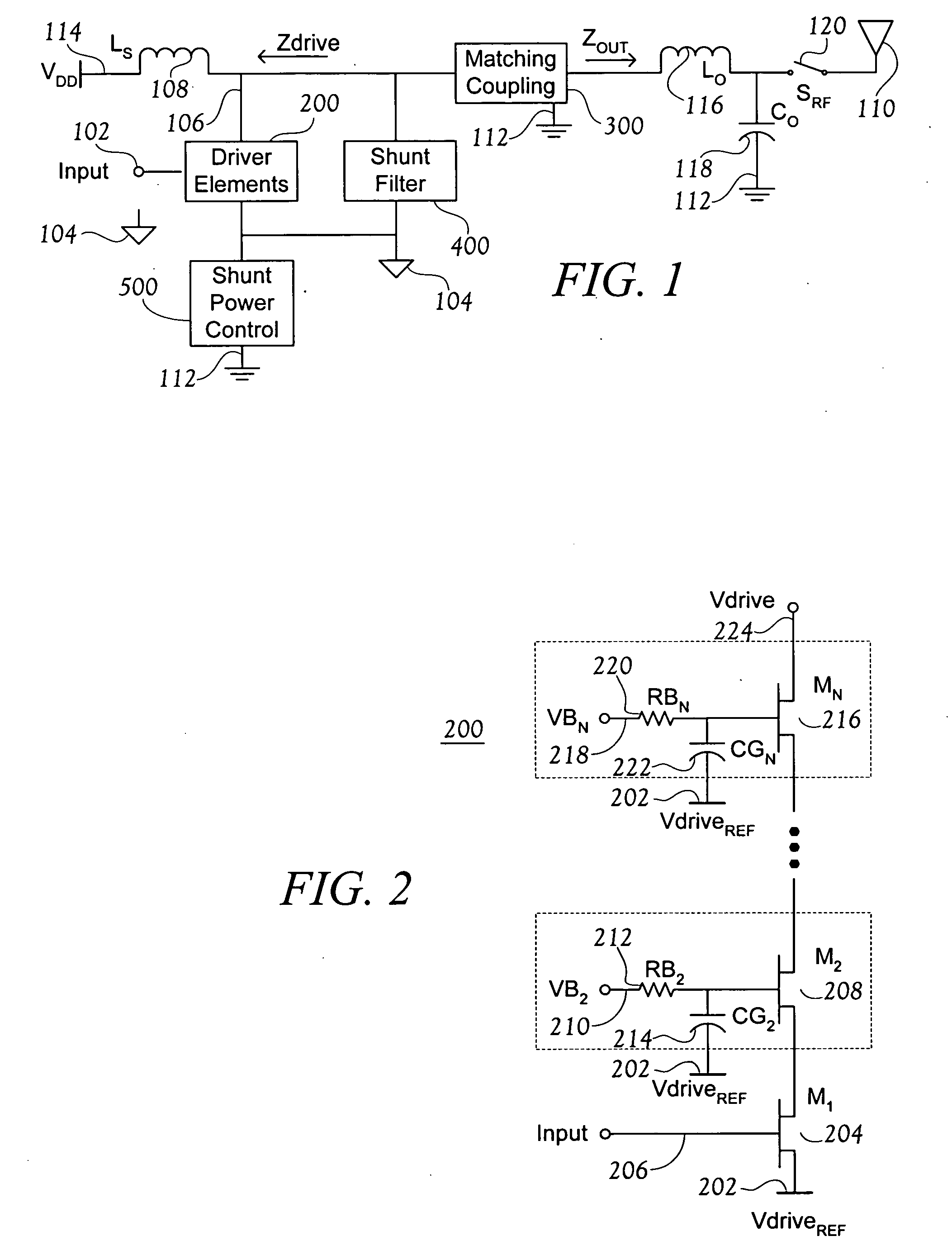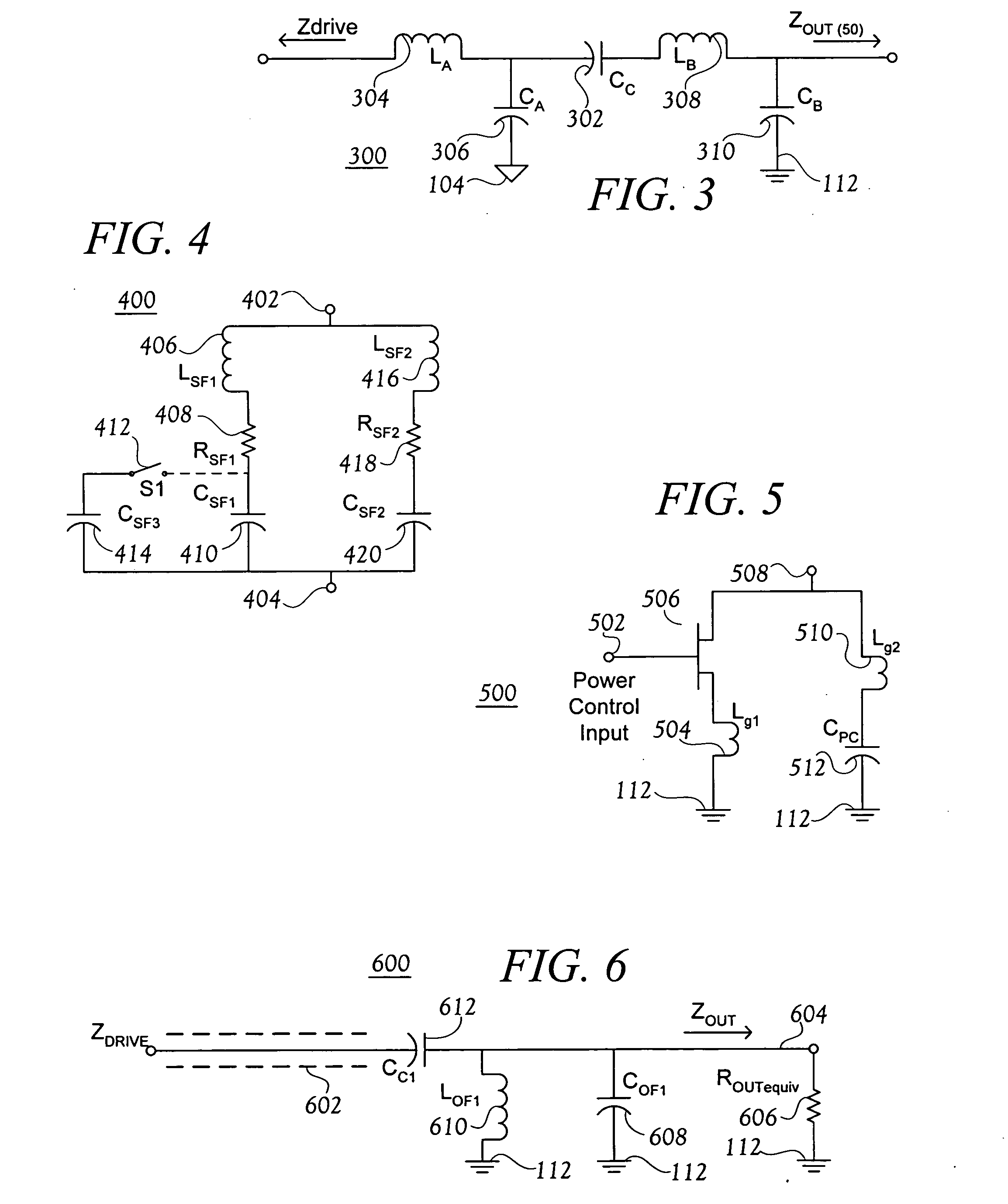Stacked transistor method and apparatus
a transistor and stacking technology, applied in the field of integrated electronic circuits, can solve the problems of undesired signal energy not only consuming circuit power, but also requiring filtering, and the type output of such amplifiers generally requires extensive filtering
- Summary
- Abstract
- Description
- Claims
- Application Information
AI Technical Summary
Benefits of technology
Problems solved by technology
Method used
Image
Examples
Embodiment Construction
[0028] Power Amplifier Overview
[0029]FIG. 1 is a block diagram of an RF power amplifier (PA). The illustrated RF PA is quite general, in that varying the biasing of devices in a driver elements block 200, and / or varying details of the other blocks, will permit the RF PA illustrated in FIG. 1 to operate in any of classes A, B, C, E or F. FIGS. 2-5 each show an exemplary circuit to implement one of the blocks shown in FIG. 1.
[0030] An input 102 is provided to the PA with respect to a circuit reference, or common, 104. The input 102 generally comprises a properly biased signal at a center drive frequency, f0. In response to the input 102, the driver elements block 200 controls conduction between a drive output node 106 and the circuit common 104. The driver elements block 200, in conjunction with current from VDD via an RF choke Ls 108, provides a signal having a particular impedance Zdrive. Zdrive may vary with frequency, but will refer to the drive impedance at the center operating...
PUM
 Login to View More
Login to View More Abstract
Description
Claims
Application Information
 Login to View More
Login to View More - R&D
- Intellectual Property
- Life Sciences
- Materials
- Tech Scout
- Unparalleled Data Quality
- Higher Quality Content
- 60% Fewer Hallucinations
Browse by: Latest US Patents, China's latest patents, Technical Efficacy Thesaurus, Application Domain, Technology Topic, Popular Technical Reports.
© 2025 PatSnap. All rights reserved.Legal|Privacy policy|Modern Slavery Act Transparency Statement|Sitemap|About US| Contact US: help@patsnap.com



